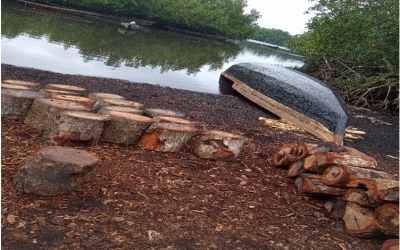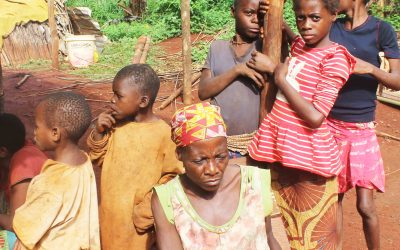
Some 20 farmers drawn from different quarters in Nwasah-Muametaw, Alou Sub Division, Lebialem Division, Southwest Cameroon, have been drilled on bare root creation. The one-day training exercise that took place at the village public-square and a nearby demonstration farm on April 7, 2018, was facilitated by the Lebialem Agroforestry Coordinator, at the Environment and Rural Development Foundation (ERuDeF), Elong Bwang.
While schooling the farmers, the ERuDeF Agroforestry Coordinator said the bare roots nursery is the most suitable method of containing the thousands of seeds nursed before planting. He added that the process is more preferable to that of polythene bags due to its cost effective and affordable nature.
“With the bare root nursery, it is easier to fertilise the soil with organic manure such as pig dungs and poultry waste,” Elong added.
Demonstrating on how the bare root nursery is created, the Agroforestry Coordinator told the farmers to start by treating the seeds before nursing them.
“We begin by soaking the seeds (acacia, and leuccaena) in a basin of water, one day to nursing. This process is to hasten germination. Within the period where the seeds have been soaked, good germination beds are created, and protected from any invasion. After the one day of soaking the seeds, gutters will be created, 30cm apart. The seeds are then nursed in the gutter. Note that the organic fertilisers (manure), are put in the gutters before the seeds are put on top. Then the top-most soil is put first before the underneath soil,” Elong explained
The Coordinator went ahead explaining to the farmers how they will be able to know the number of seeds they are nursing, so they will be able to calculate the germination rate.
“We measure the seeds this way; a kilogram of acacia seeds contain 31,000 seeds. Meanwhile, a kilogram of leuccaena seeds contain 15,000 seeds. It is important to keep these statistics because when we shall be doing the monitoring and evaluation, we shall calculate the total number of seeds nursed minus the total number of seeds germinated,” Elong expatiated.
He urged the farmers to take good care of the nursery and carryout follow-ups so that the germination rate shall be high.
On their parts, the farmers were so excited learning on how to nurse these seeds. They extended their gratitude to ERuDeF and partners, indicating that they shall put all those they have been taught into practice.
“I’m so grateful for haven learned this much. I promise to put all of this into practise so I can also benefit from the proceeds that come with carrying out the agroforestry practice,” said Asongafak Boniface, an indigene from Nwasah village.
It should be noted that, besides the acacia and leuccaena agroforestry tree species nursed with the farmers, other seeds were also distributed. The seeds include prunus, moringa, neem, huckle berry, and okra. The vegetable seeds were used to motivate the farmers so they shall pay more attention to the agroforestry system of farming.
The farmers were also sensitised on forest garden, a great system of agroforestry farming. They were also trained on the different layers of forest garden.
The project is facilitated by ERuDeF, in collaboration with Trees for the Future, USA.
Agroforestry system is a land-use system that integrates trees, crops, people, and/or animals on the same piece of land in order to get higher yield. This can be done by planting trees and crops together in the same piece of land at the same time or they can be planted one after another.
By Smith Ntungwa


